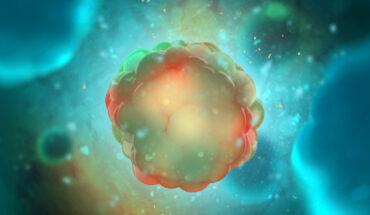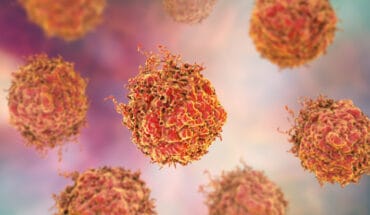Leukaemia is a cancer of the blood with a high mortality rate, partly due to the fact that leukaemia cells show a remarkable ability to survive initial chemotherapy treatments. These surviving cells are often resistant to treatment, allowing the cancer to spread and become fatal.
It has always been thought that the leukaemia cells saved themselves by hiding in specific niches within the bone marrow that usually harbour blood stem cells – basic cells that can become all other blood cells out in the bone marrow. However, no one knew exactly where these hiding places were. We set up our study at Imperial four and a half years ago to try and find where leukaemia cells hid themselves away, by transplanting genetically modified leukaemia cells which fluoresced under laser light into mice models.
We were therefore incredibly surprised to find that there were no hide outs at all. Instead, the leukaemia cells were scattered around the bone marrow and they kept ‘running’ when they were exposed to chemotherapy. Leukaemia cells, like some other cells, move by drastically changing their shape, extending a foot and the retracting a tail to propel themselves around. They did move before the chemotherapy, but more slowly. And the harsher we made the chemotherapy, the faster the surviving leukaemia cells ran around, almost like a hive of busy bees.
Of course, we had to check our findings were consistent and moved from animal to human samples. We did this with the assistance of the Francis Crick Institute and the University of Melbourne.
The research was funded by the charities Bloodwise and Cancer Research UK, alongside contributions to buy equipment and recruit team members from the European Research Council, the Human Frontier Science Program, and the European Hematology Association.
We took human leukaemia cells and inserted them in mice who were genetically altered to have no immune system to avoid tissue rejection. Again, we found the same thing. The cells moved more rapidly when they were exposed to chemotherapy.
Although this is early stage research, this was a paradigm-changing discovery and means that we have to abandon earlier theories about hiding places and look instead at other explanations for why leukaemia cells are so hardy. We now know that it would be ineffective to target particular niches in the bone marrow to tackle treatment-resistant leukaemia.
Now that we know that the cells don’t hide, we can explore why that is and how their movement helps them to survive. Ultimately we want to find out whether we can stop the movement, and whether this could kill the treatment-resistant cells.
Luckily, there are already available molecules which we know can slow down cell motility and we intend to start with those.
Although we have focused on T cell acute lymphoblastic leukaemia for now, our research could have implications for other types of cancer too, particularly other types of blood cancers. But metastatic cancer cells are also highly mobile, moving throughout the body to cause secondary tumours, and these could be the subject of future research too.
- The faster they run - 19th October 2016






